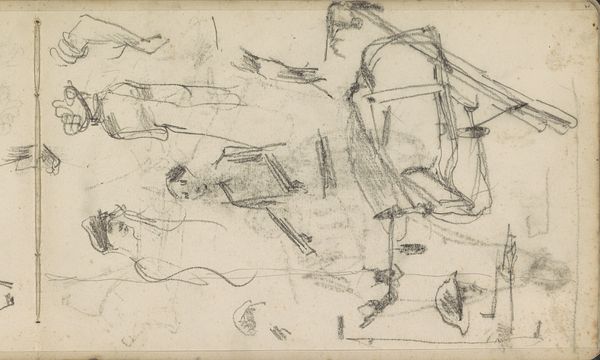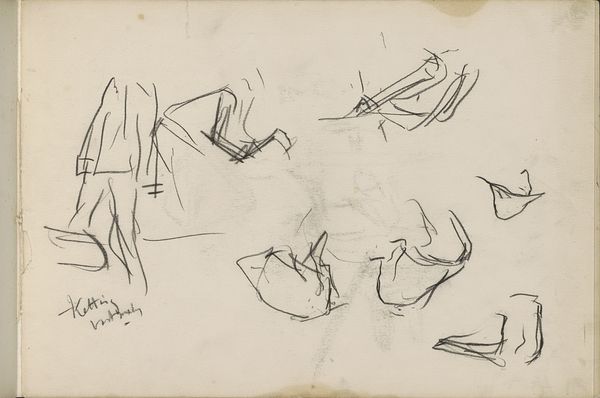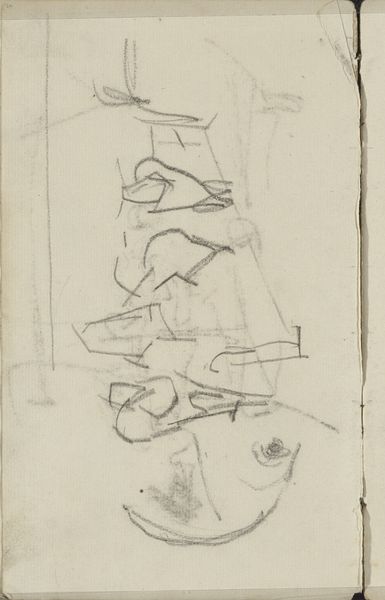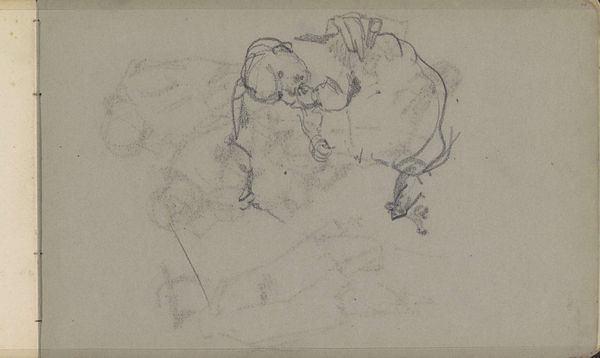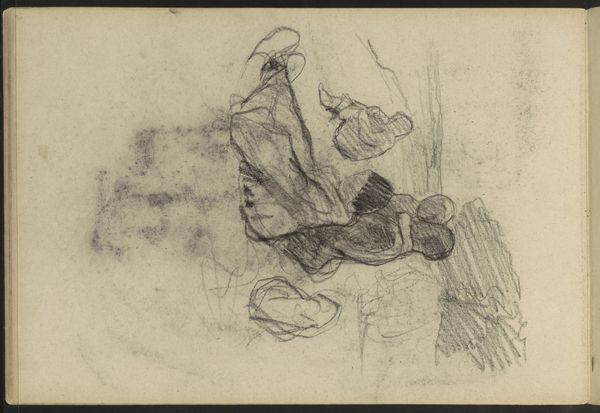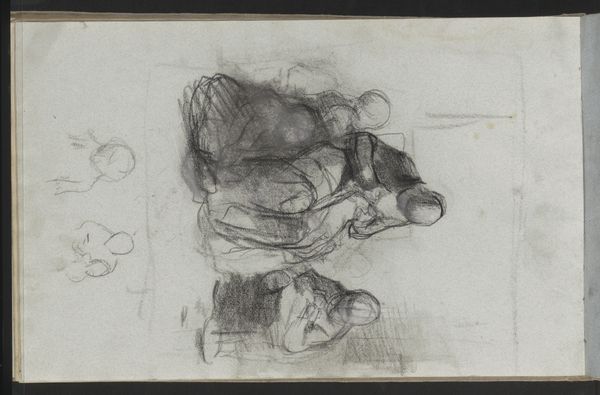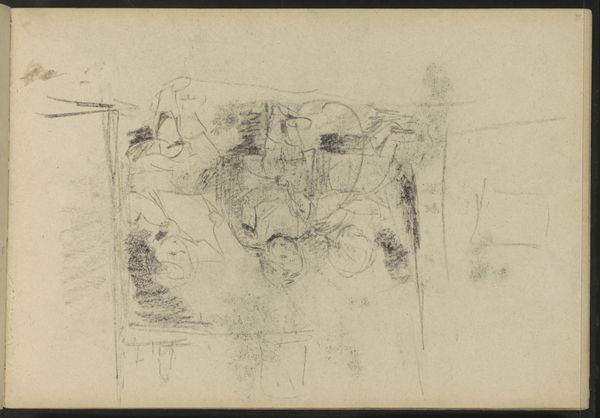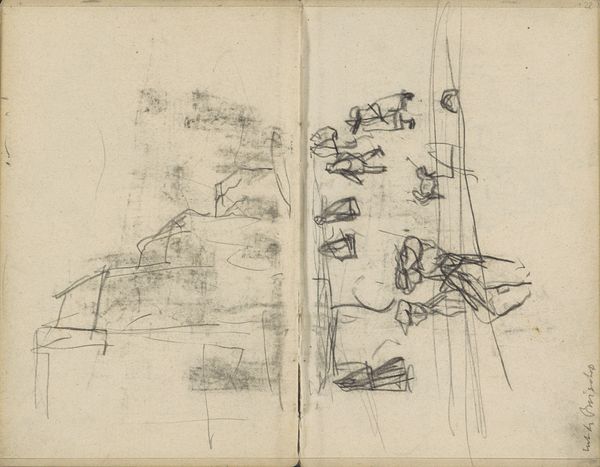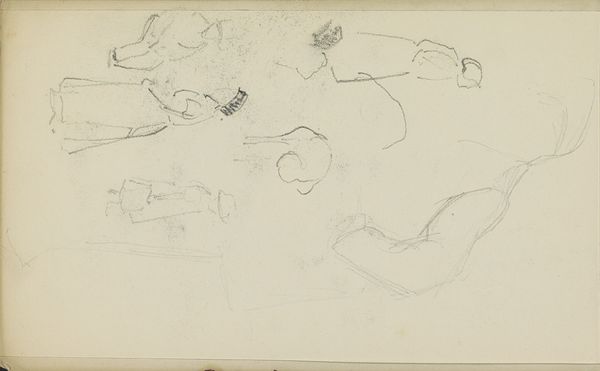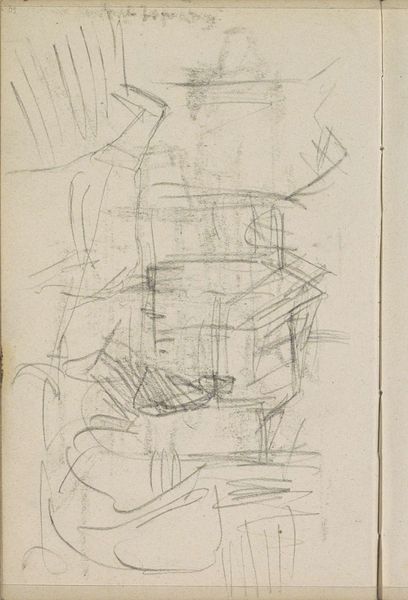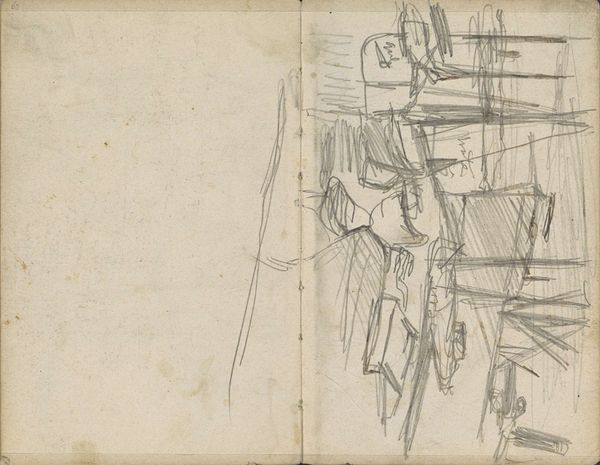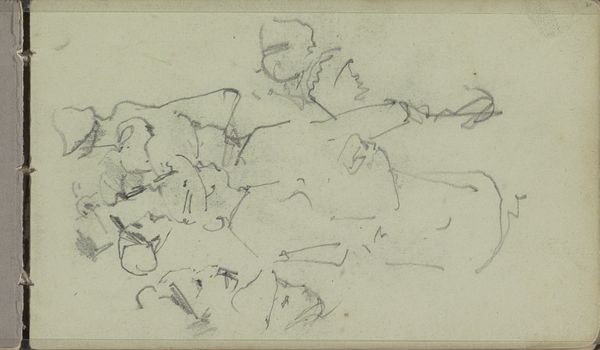
Figuurstudies, mogelijk vissersvrouwen die netten boeten 1880 - 1882
0:00
0:00
drawing, pencil
#
portrait
#
drawing
#
impressionism
#
figuration
#
pencil
Copyright: Rijks Museum: Open Domain
Curator: Breitner's "Figuurstudies, mogelijk vissersvrouwen die netten boeten," made around 1880-1882, is a pencil drawing now residing in the Rijksmuseum. What are your initial thoughts on this piece? Editor: It's a quiet scene. Somber, almost, with a palpable sense of the weight these figures carry in their work. Curator: Absolutely. I’m interested in the quick, almost frantic nature of the pencil strokes. We see a pure demonstration of mark-making—Breitner rapidly deploying the pencil's materiality across the paper to capture these women and their labor. There’s a rawness to it that speaks volumes. It moves beyond mere representation. Editor: I see it as part of a larger movement toward social realism in art. The emphasis shifts from idealized portrayals to depicting the working class, their struggles, and their daily lives. This drawing humanizes these women. It encourages the public to acknowledge and, perhaps, empathize with their social situation. Curator: Considering that art historical trajectory is key, but for me it is as much about the *how* as the *why*. How are social conditions revealed through his medium and method? Breitner is known for capturing fleeting moments, and his technique of rapid sketching, a hallmark of Impressionism, really conveys that sense of immediacy, giving us direct access to a brief glimpse of a lived experience of female labor in the fishing industry. Editor: Right. It certainly served a purpose within the changing art landscape. Artists started challenging academic norms and the established art market. By depicting everyday life, they critiqued social inequalities and the elitist nature of the art world itself. Art wasn't just for the wealthy anymore. It was about portraying and representing all members of the society, wasn’t it? Curator: And even consuming them as the subject matter, placing labor and materiality at its centre! This quick study reflects the shift in how art itself was made and considered—from meticulously planned to impulsively expressive, like an echo of their immediate toil. Editor: Precisely, that shift reveals as much as the content itself. Thinking about it makes me consider how the location in the museum context affects the viewer’s understanding of these pieces. Curator: It’s a powerful confluence of materials, methods, subject and circumstance. Editor: I agree; a quiet glimpse of labor made monumental by the forces that shaped it.
Comments
No comments
Be the first to comment and join the conversation on the ultimate creative platform.
